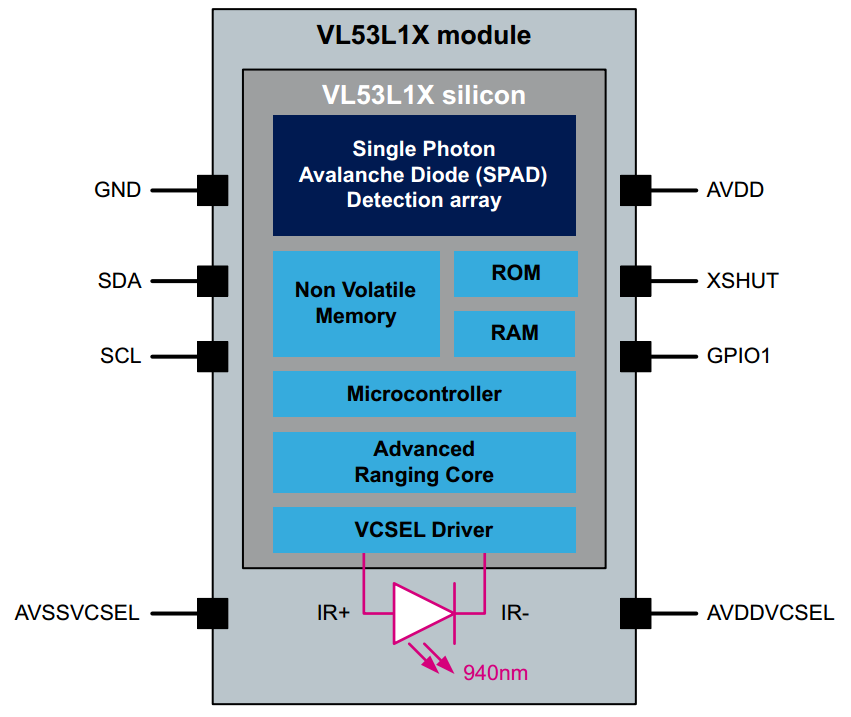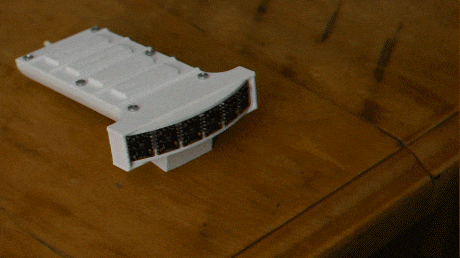-
Social Distancing Badge Design Prototype
04/17/2020 at 04:27 • 0 commentsIn the last few days of the Social Distancing Badge Kickstarter we have the design prototype built up and working.
![]()
Turns out LCD displays don't like hot air and like to shatter and leak. So yeah, don't get them anywhere near hot air.
-
Social Distancing Badge
03/31/2020 at 10:01 • 0 commentsWe just launched a Kickstarter for the SensorDots Social Distancing Badge which is based on the MappyDots!
![]()
The Social Distancing Badge is an Arduino based LiDAR badge that measures and displays the distance between you and other objects. It features a lightweight and low power design that can be pinned to your bag, backpack, shirt or even be used as a belt buckle or hair clip.
Here's some more of the features:
- Customisable Arduino based firmware (328PB microcontroller).
- Eye-safe VL53L1 LiDAR sensor.
- Micro USB serial and programming interface, as well as recharging.
- Hackable GPIO interface.
- 100mAh rechargeable button cell lithium battery.
- Optional lanyard or safety pin attachment points (badge includes solderable safety pin to clip to a shirt or jacket and 3.2mm holes on the top).
- 57mm x 38mm x 10mm badge size (thickness includes battery).
- Low power and easy to read 4 digit LCD display.
- Status/indicator LED and charging LED.
- Mode switching button.
Check out the campaign here - https://www.kickstarter.com/projects/sensordots/the-social-distancing-badge
-
SensorDots Port MuxR Kickstarter
03/03/2019 at 07:32 • 0 commentsWe just launched our Kickstarter for the Port MuxR!
![]()
The Port MuxR is like a KVM Switch but for electronics. It's a 8/16 channel, bi-directional, switched bus multiplexer that lets you branch out programming cables, logic analysers, debuggers and more.
Check it out here - https://www.kickstarter.com/projects/sensordots/sensordots-port-muxr-a-kvm-switch-but-for-electron
Here's some of the features:
- Bidirectional data flow, with near-zero propagation delay through each FET switch.
- Low ON-state resistance through switch ICs (Ron = 3 Ω typical, @ 3V) and optional series resistors on primary port pins.
- Low input/output capacitance.
- -2V undershoot protection prevents the FET (NMOS) switches from inadvertently turning on (when in off state) during signal undershoot events.
- 0 to 5V signaling levels supported.
- Supports both digital and analog applications.
- USB serial/I2C slave control interface with selectable I2C addressing (the I2C port is master mode capable too).
- Low crosstalk through switches when off.
- 8 controllable Vcc pins (with LED indicator).
- 3.3/5V Vcc selection header (with optional external power on adapter boards).
- 8x8 pin or 16x4 pin multiplexing with additional primary port.
- Included open-source .NET based control software.
- Open-source Arduino control firmware for easy updating or modification to suit your requirements.
-
Buying Parts
07/26/2018 at 09:42 • 1 commentWhat does an order for a tray of 490 Microchip 328PBs look like?
Once you unbox the courier package, you get another box:
![]()
Inside the box, so shiny:
![]()
Opening the bag, you get the tray and some desiccant material:
![]() And here are the microcontrollers on the tray:
And here are the microcontrollers on the tray:![]()
Delicious!
-
Pogo Pinlicious
07/08/2018 at 05:39 • 0 commentsHere is the programming board that is used to program SensorDots firmware and test that pins are working. Each board segment's supply rail is separately controlled by a MOSFET connected to a TI TCA6424A 24-bit GPIO expander.
![]()
With this, each board is programmed and tested in sequence, which removes the need to gang up multiple programmers (as shown here for example - https://www.sparkfun.com/tutorials/233).
Each pin under test is connected on the same bus to simplify wiring and remove the need for more bus expanders. The downside to this is that it cannot detect which board is shorting if there is a short on a pin, but this is pretty rare (and can be tested for by hand).
Testing is performed by the onboard Teensy (to the right) and there is a ICSP header to connect to a programmer, as well as test routines in the firmware of the boards.
-
VL53L1X Teardown
06/22/2018 at 11:35 • 0 commentsWe've taken apart the VL53L0X sensor. So why not the VL53L1X?
Here's the package with protective Kapton tape:
![]()
Stop you're making me blush:
![]()
Removing the IR filters, you can now see some optics. This is different to the VL53L0X sensor as this sensor has an adjustable field of view:
![]()
Now taking the whole package apart, we have access to the die:
![]()
Interestingly the sensor die is practically identical to the VL53L0X sensor except for some capacitors on the left.
![]() Now it makes sense that the footprint on the VL53L1X is identical to the VL53L0X.
Now it makes sense that the footprint on the VL53L1X is identical to the VL53L0X.
It seems they are mostly making improvements to the front end avalanche diodes to allow them to be more sensitive to the returning light. Hence the similarities to the VL53L0X.
Here's the block diagram of the VL53L1X:![]()
-
Calibration-Free Dirty Environment Cover Glass
05/28/2018 at 09:00 • 2 commentsCheck out the following ST video for a novel technique to remove the need to calibrate the VL53L1x sensor on the MappyDot for crosstalk if you are using a glass cover:
-
Picking and Placing
05/13/2018 at 10:42 • 0 commentsWe have a new pick and place machine, the CHMT36VA.
While some things are still being figured out with the machine, it's currently working quite well.
Here's a quick demo video of the machine placing a few of the passives as a test run:
-
MappyDot Important Firmware Update!
05/03/2018 at 12:40 • 0 commentsIf you wish to use the offset calibration or crosstalk calibration functions of the regular MappyDot (not Plus) you will need to upgrade to the 1.5 firmware release, as there is a bug that prevents the calibration data from being loaded.
There is a firmware update guide available now which walks through the update process:
https://sensordots.org/firmwareguide
![]()
If you are running an older version, it's worthwhile to upgrade as there are a bunch of new features such as:- Auto address recovery.
- Custom measurement mode profiles.
- Soft interrupt command.
- AmbientRateRtnMegaCps and SignalRateRtnMegaCps commands.
- Tweaks to filtering.
- And lots of minor bug fixes.
-
1.4 MappyDot Firmware Released
04/19/2018 at 13:52 • 0 commentsThe 1.4 version of the MappyDot firmware has been released with a few bug fixes and small features from the MappyDot Plus added in.
The feature list:
- Added soft interrupt command.
- Added AmbientRateRtnMegaCps and SignalRateRtnMegaCps command.
- Tweaks to filtering, no longer filters with measurement rate under 12Hz, now changes filter parameters when measurement frequency changes.
- Reset default function now applies the changes to the active ranging (previous versions required you to save settings and restart the module before they became active). You still need to save the default parameters if you want them to be retained.
- Reduction to API platform code to save code space.
It's available in the repo - https://github.com/SensorDots/MappyDotFirmware
Also here's an unrelated Litar string strumming gif (it is using the soft interrupt however):
![]()
 Blecky
Blecky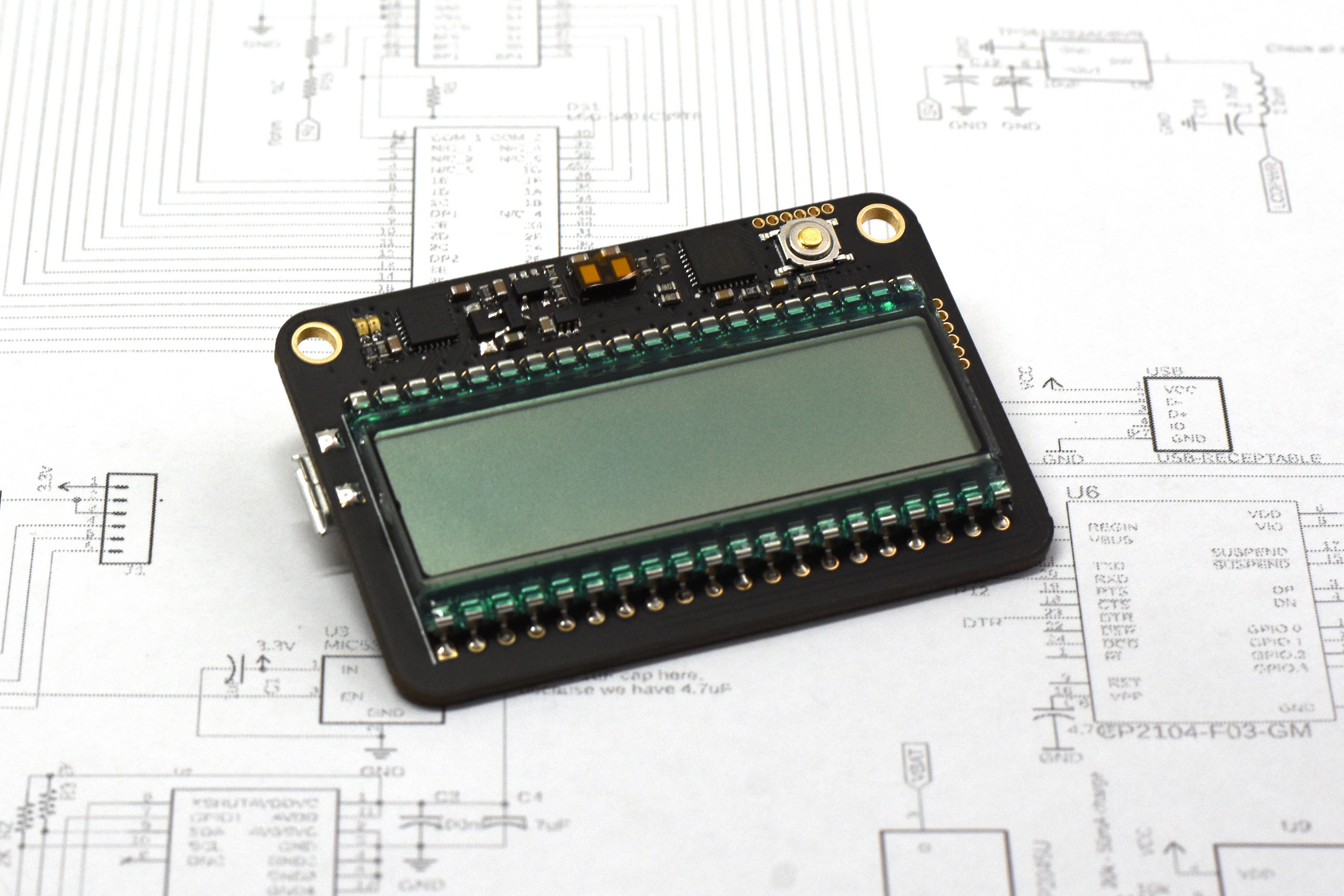

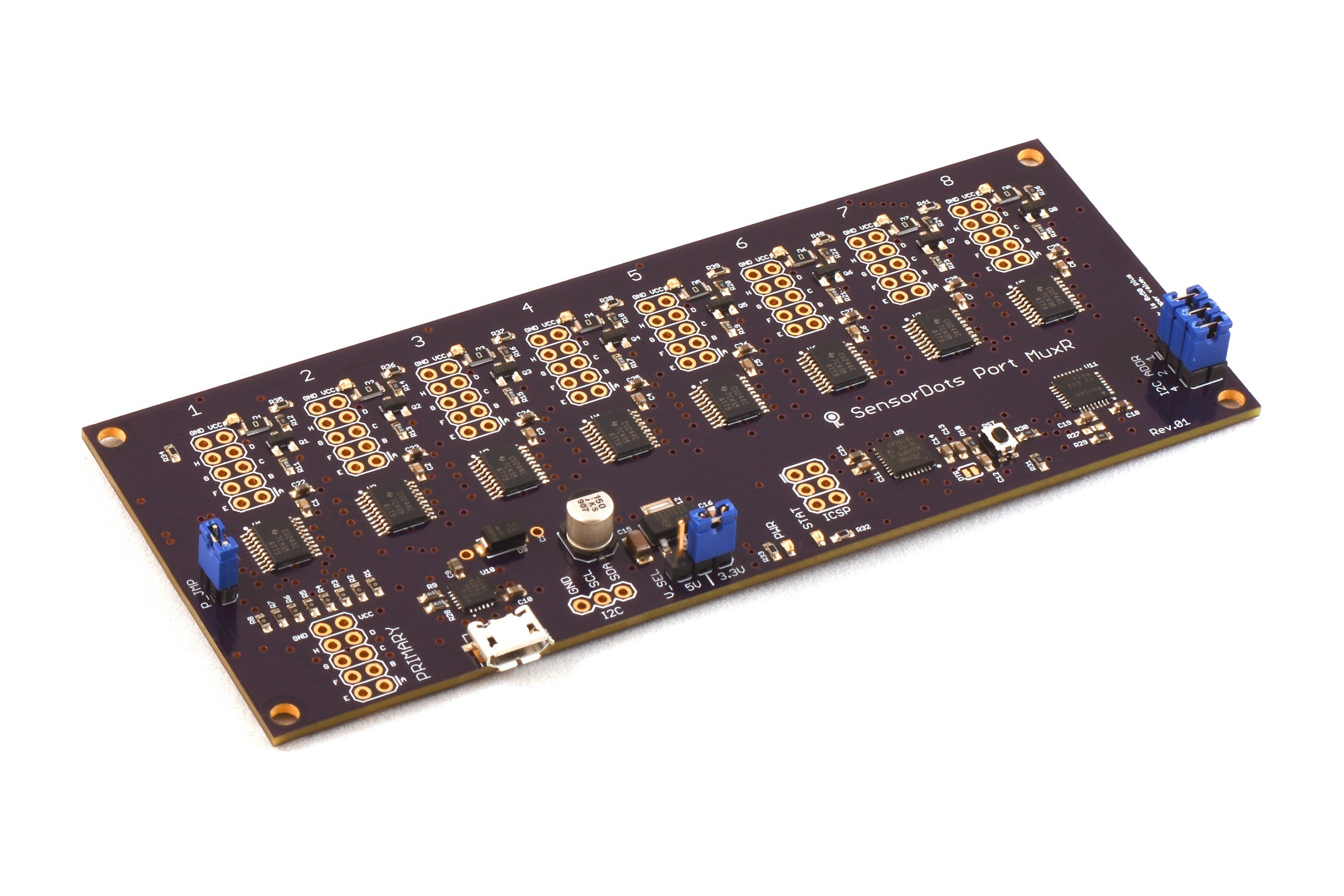

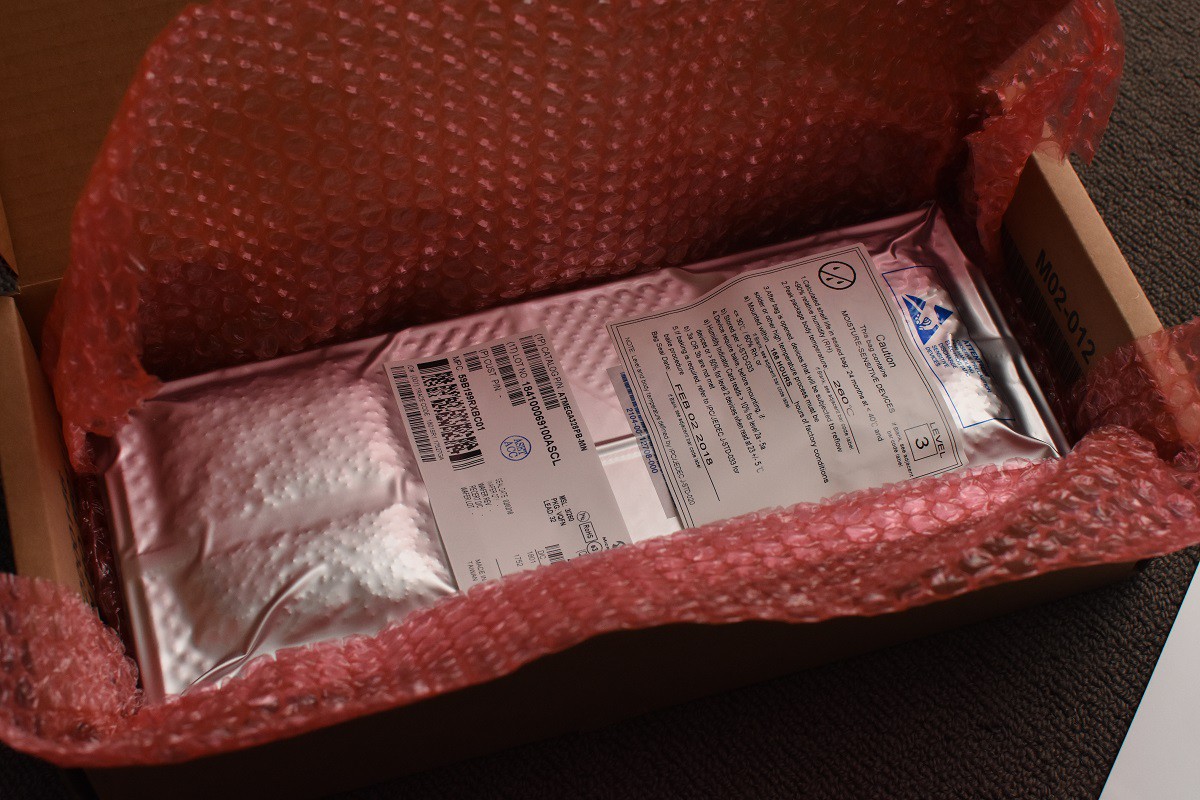
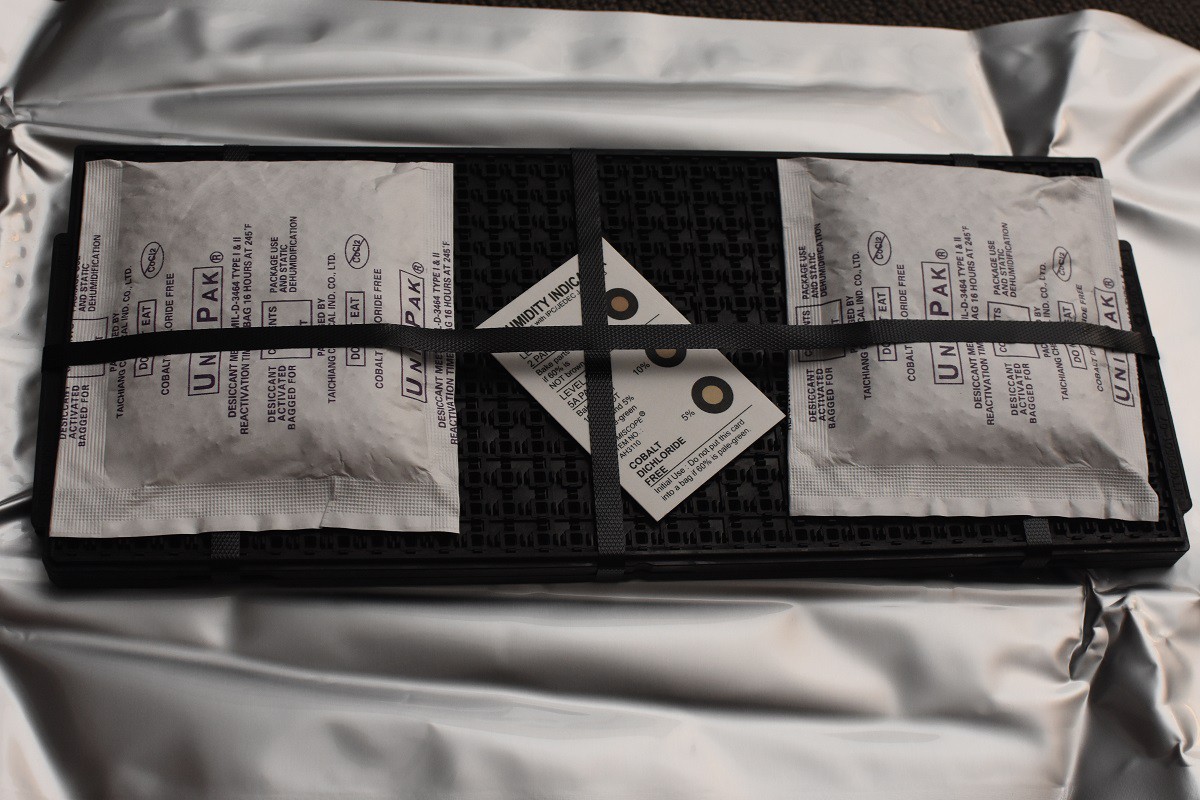 And here are the microcontrollers on the tray:
And here are the microcontrollers on the tray: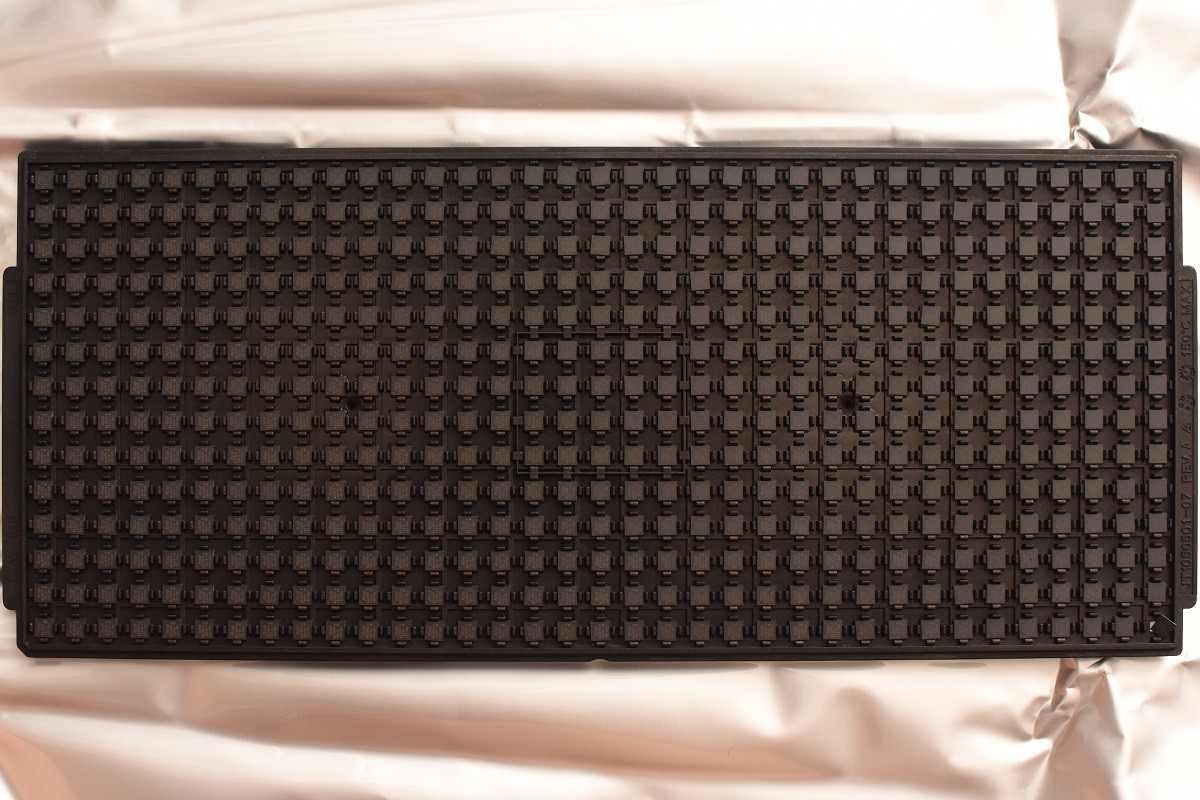

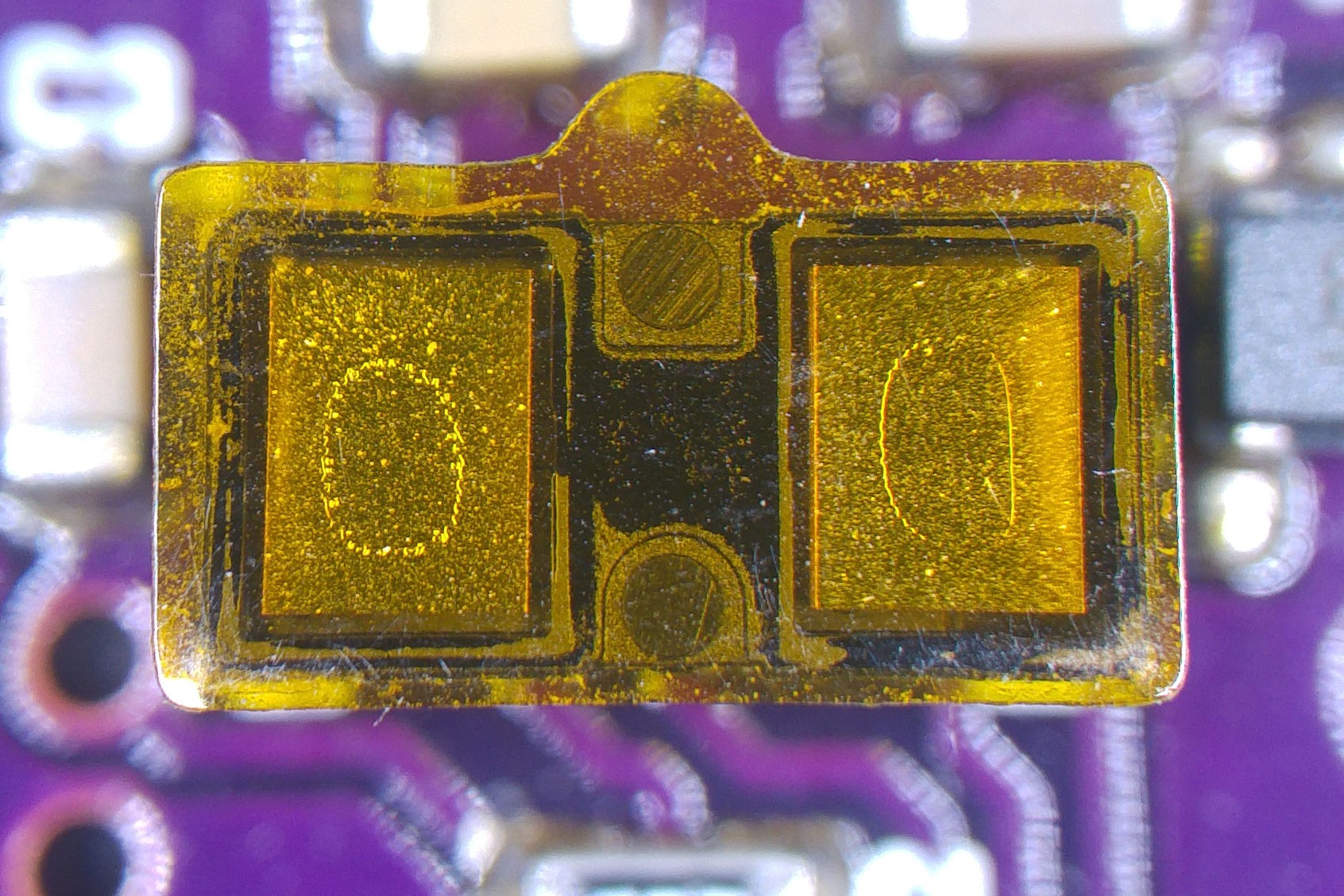
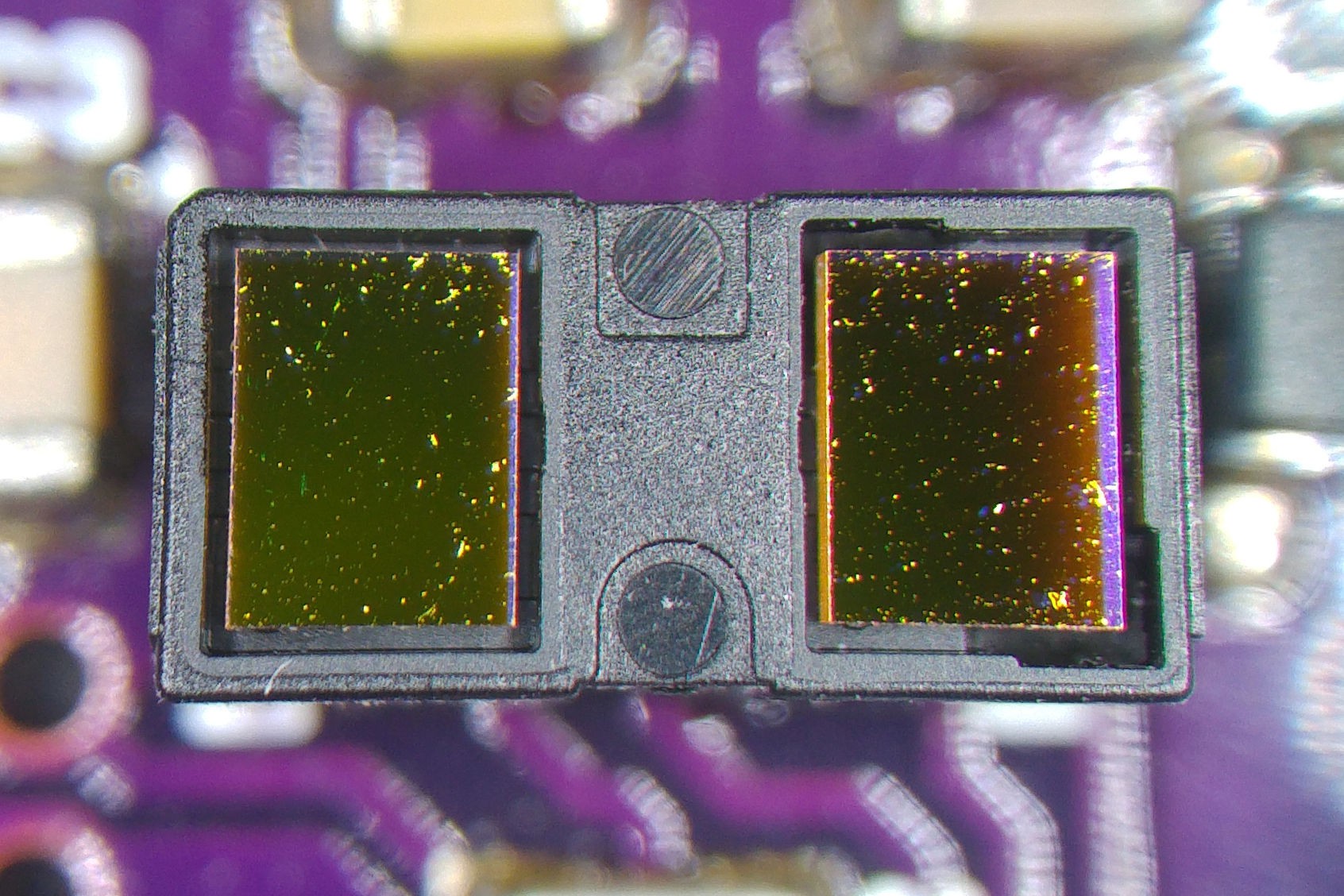
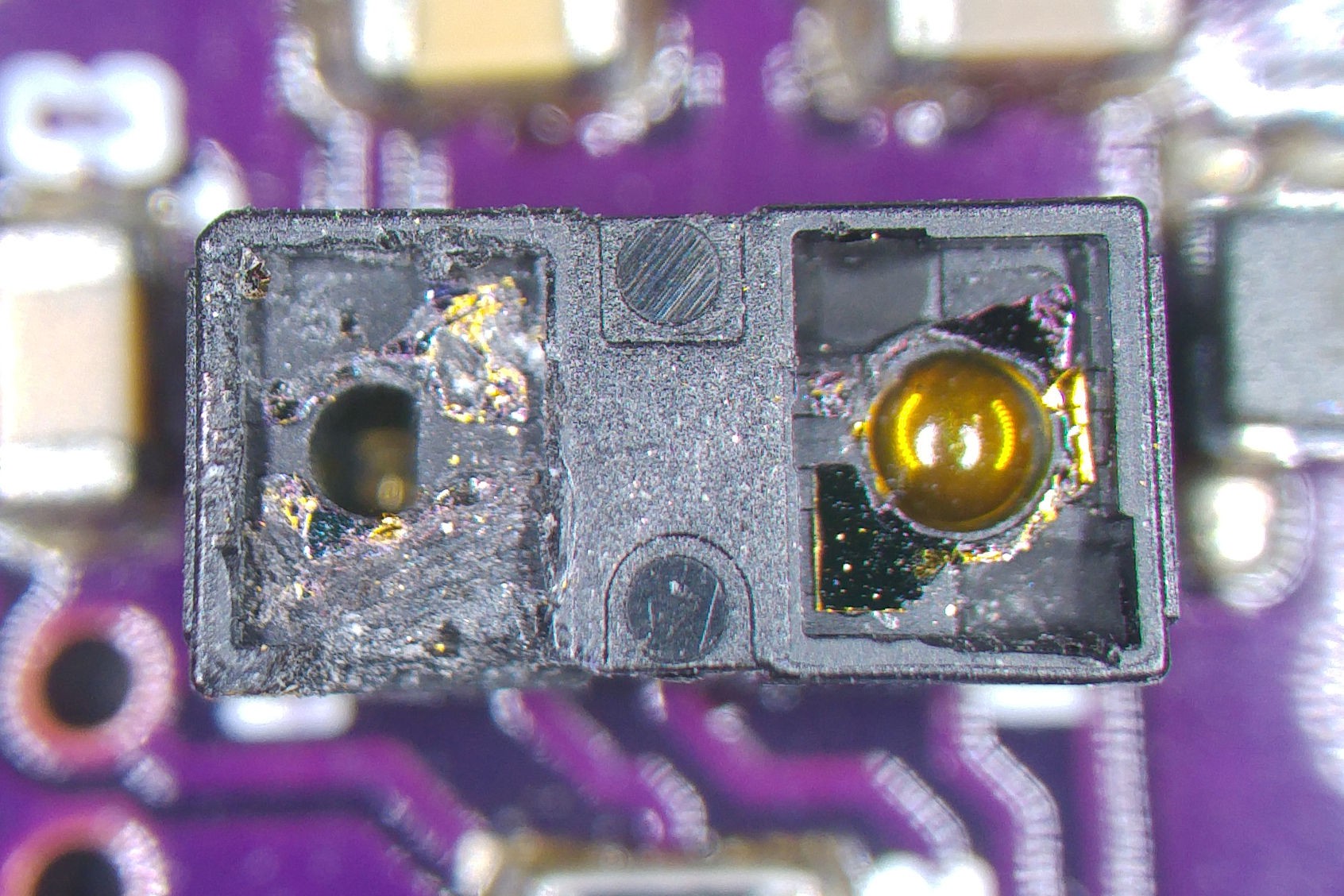
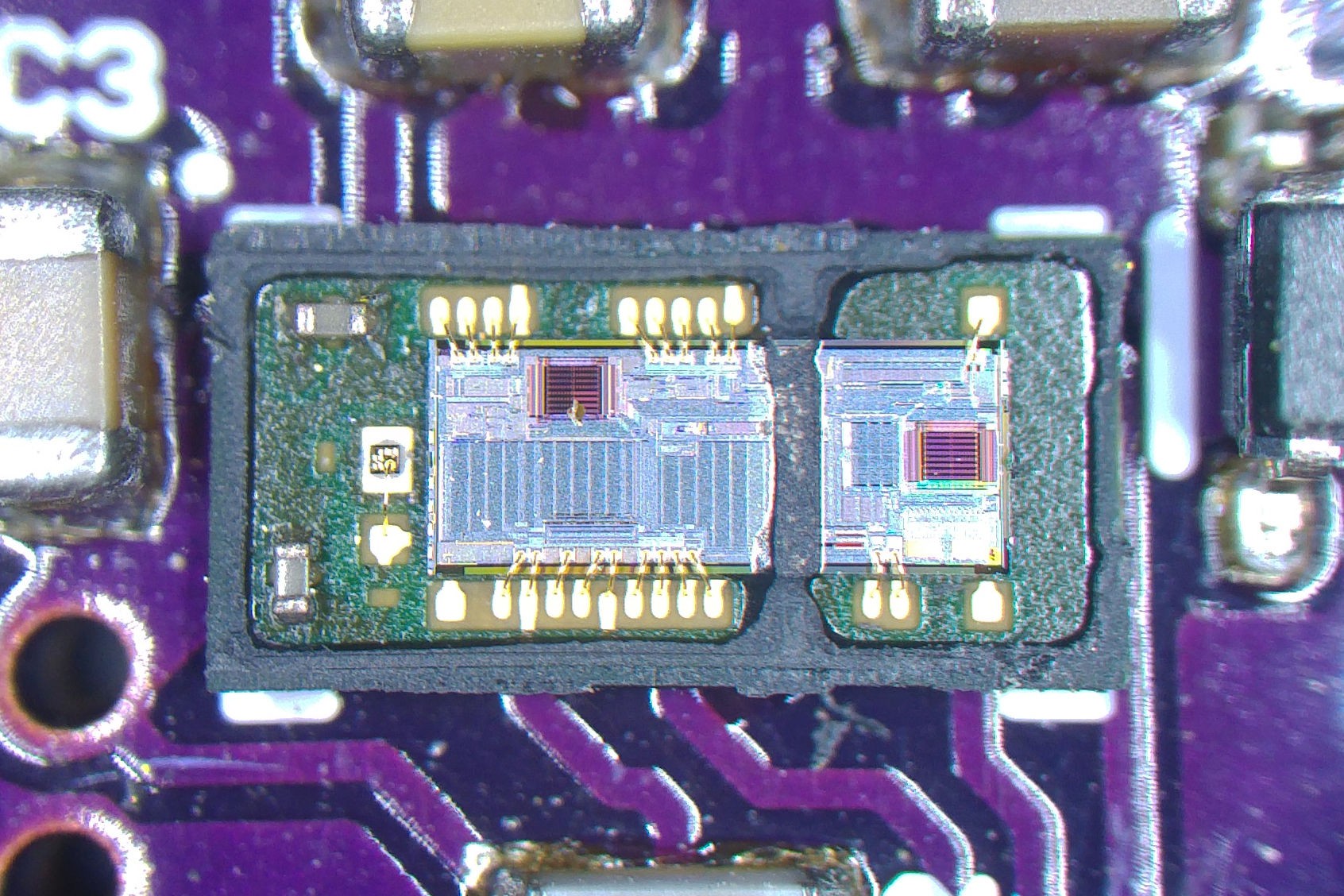
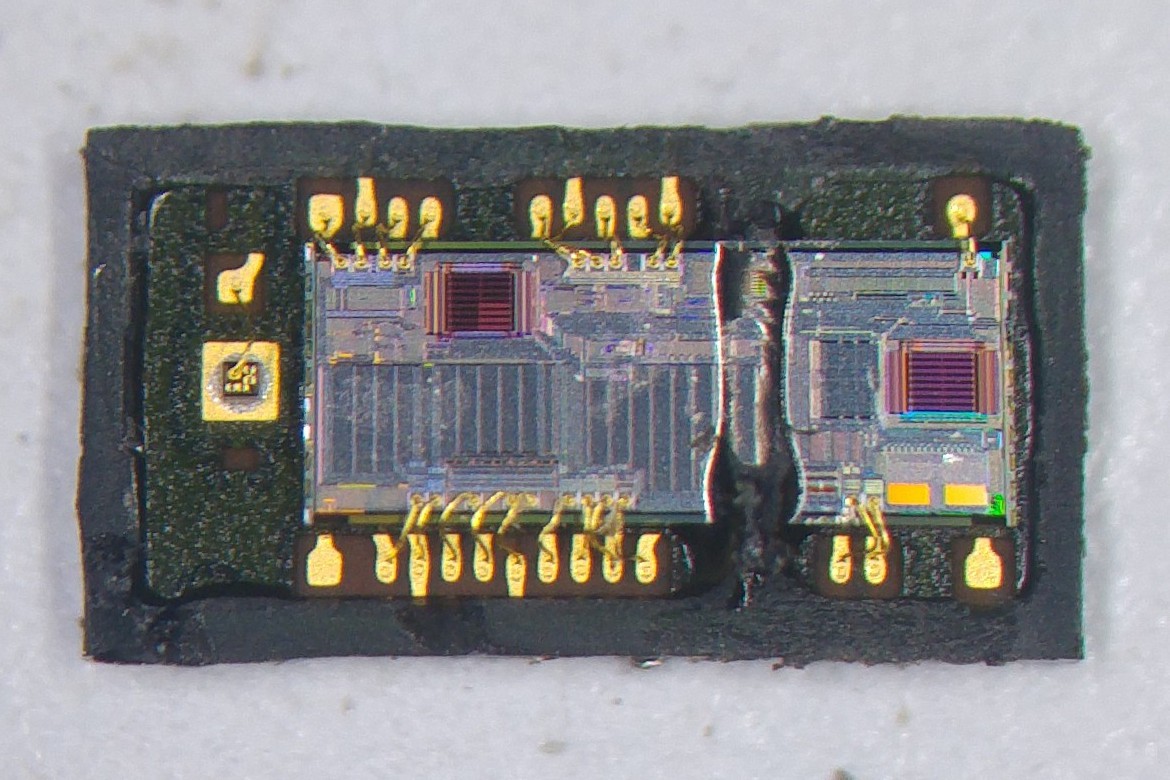 Now it makes sense that the footprint on the VL53L1X is identical to the VL53L0X.
Now it makes sense that the footprint on the VL53L1X is identical to the VL53L0X.